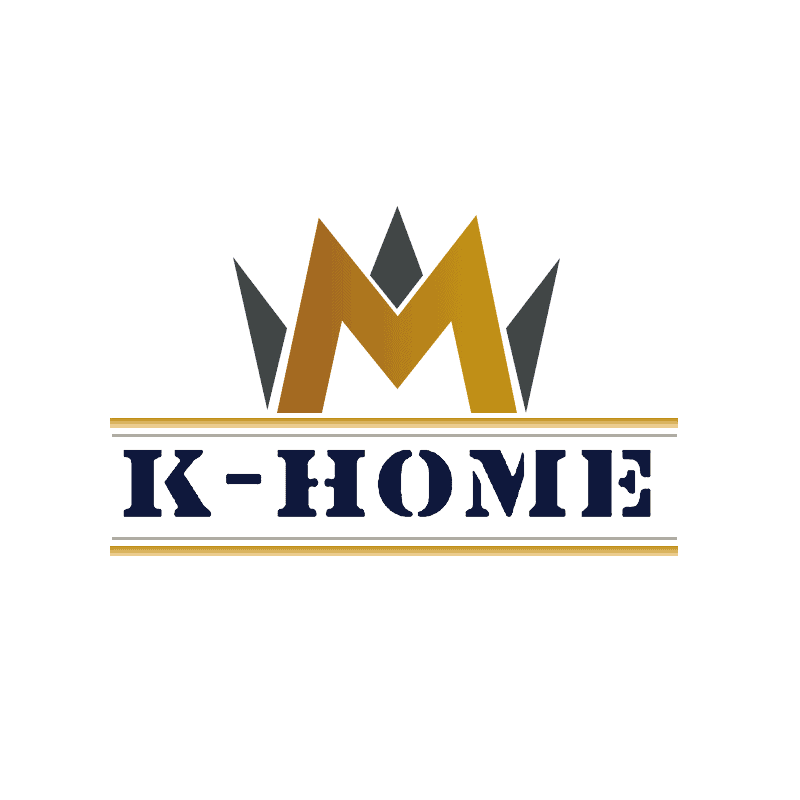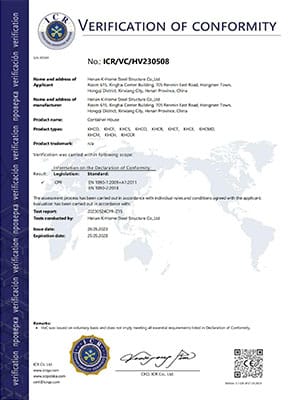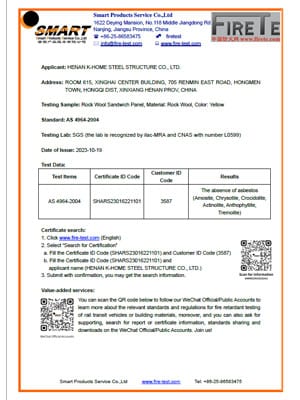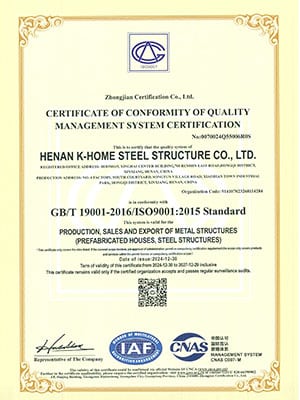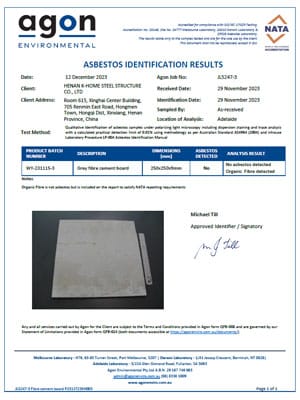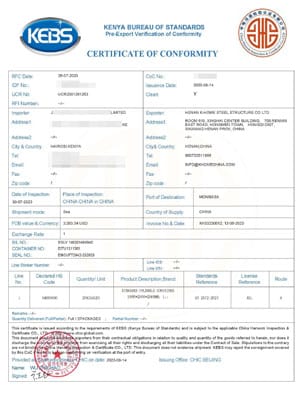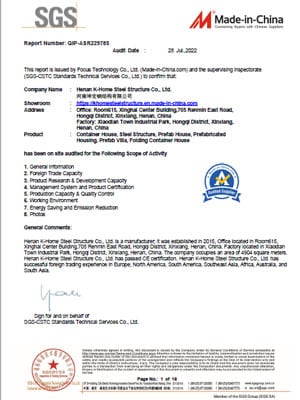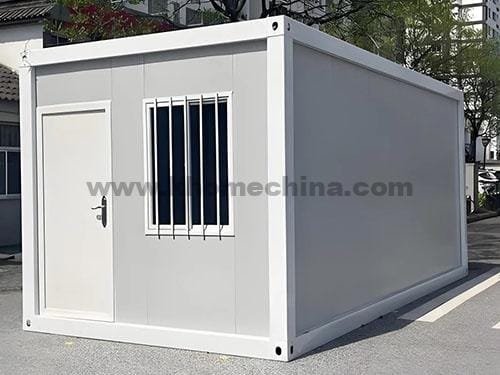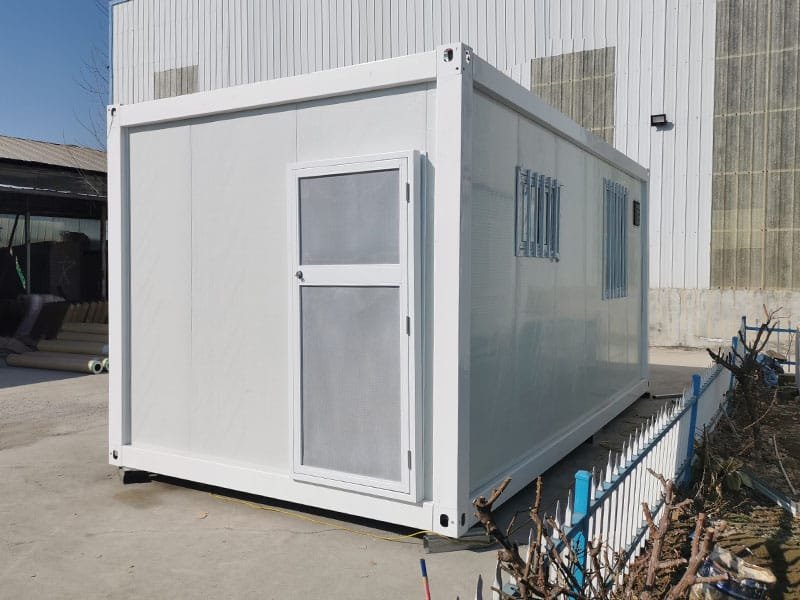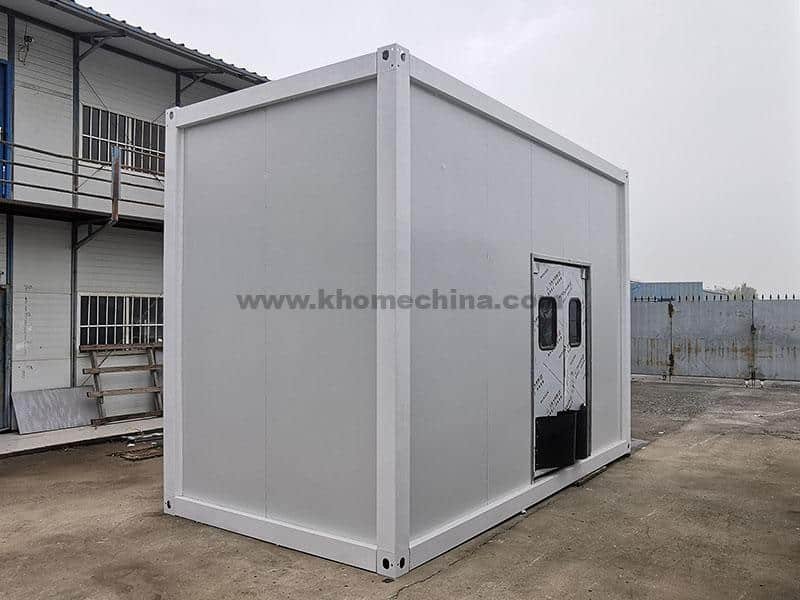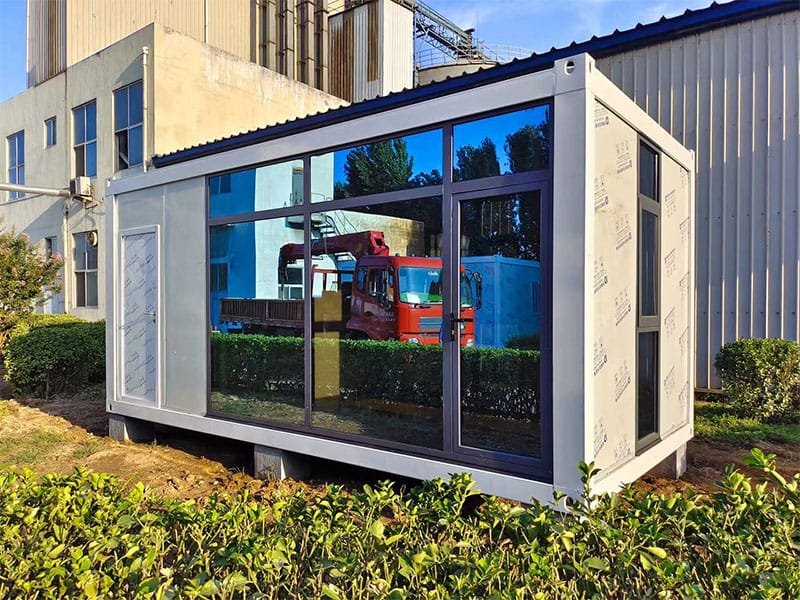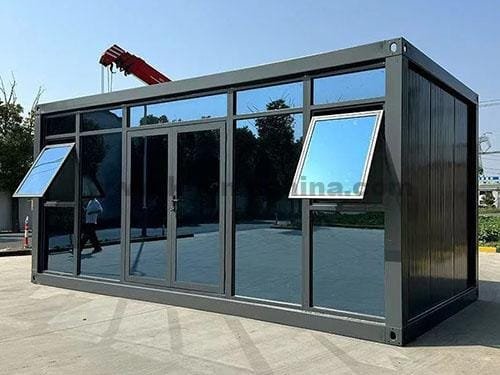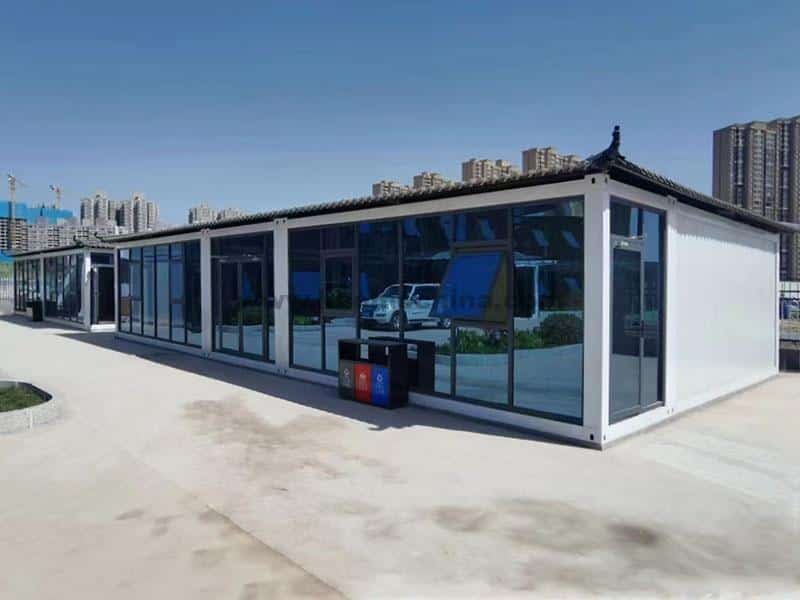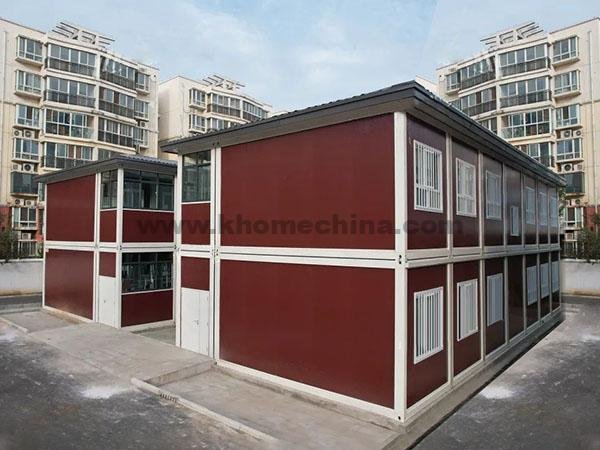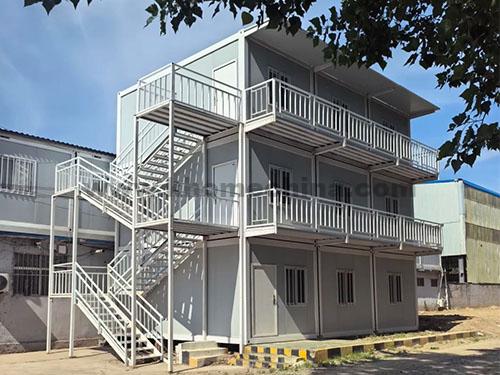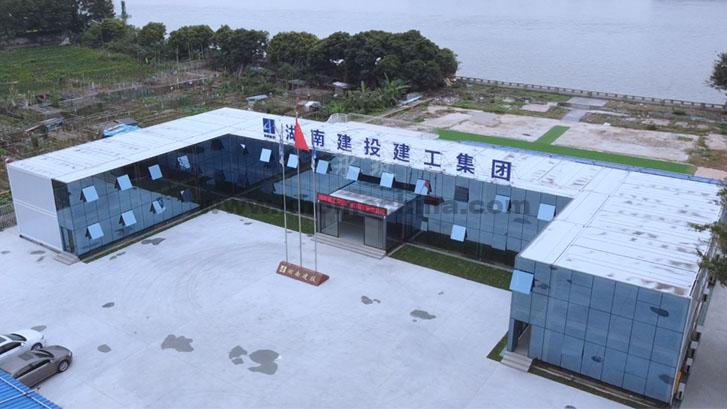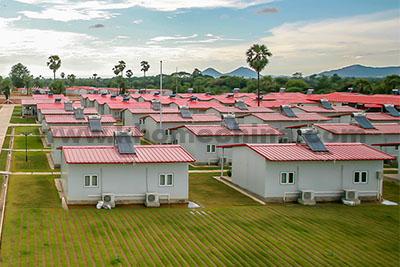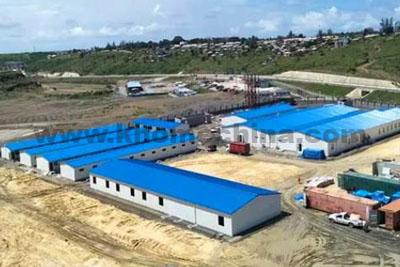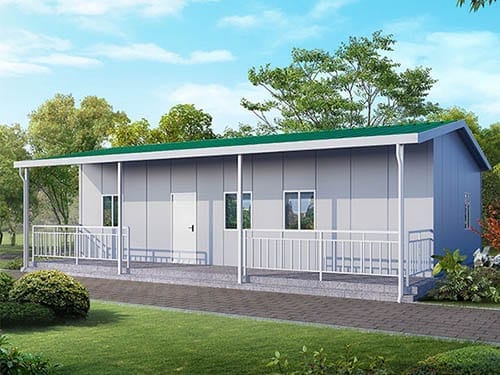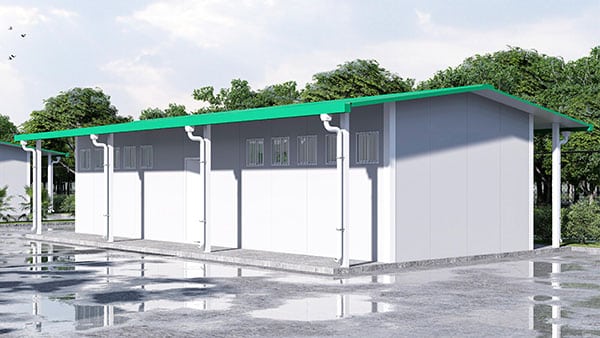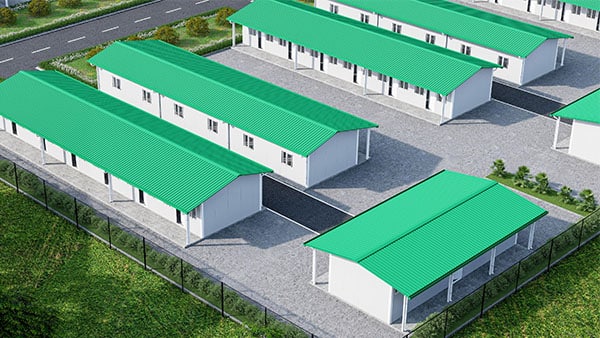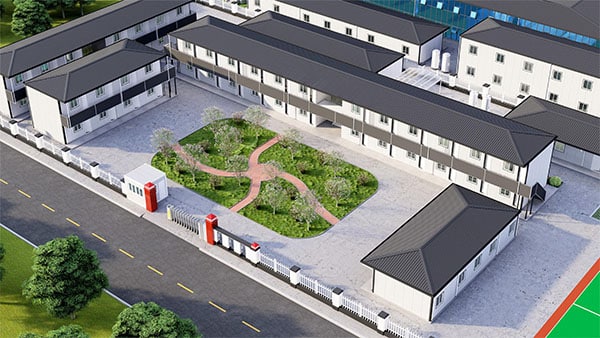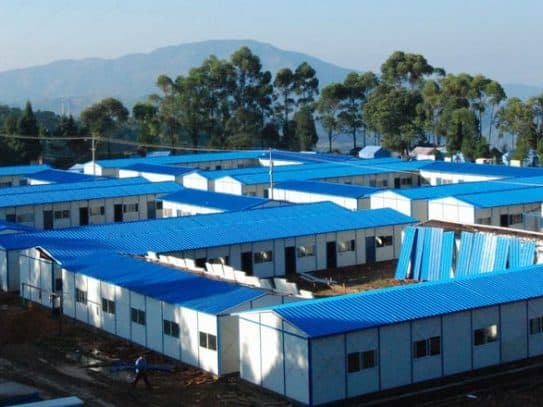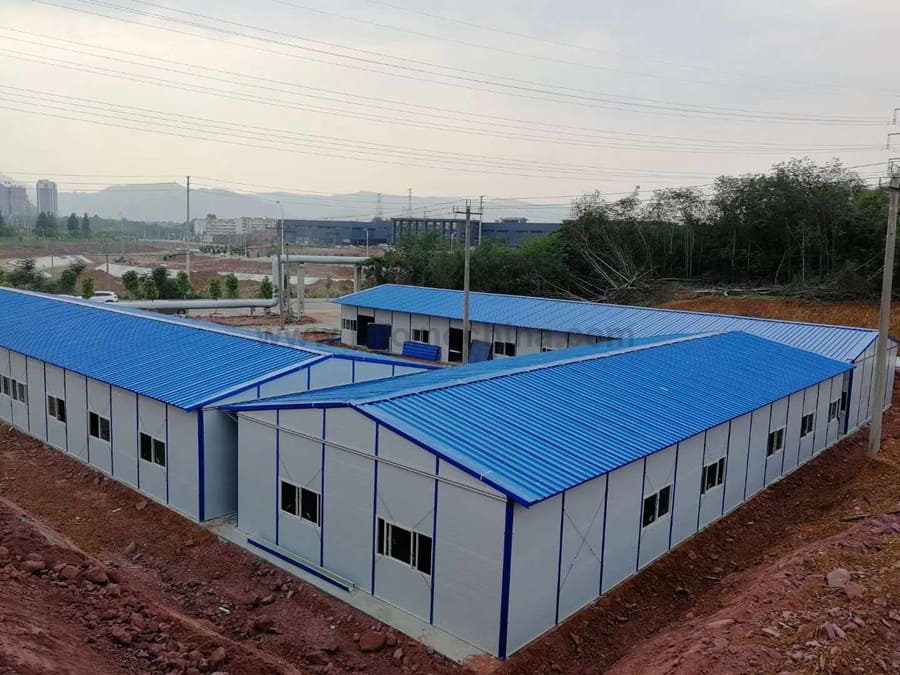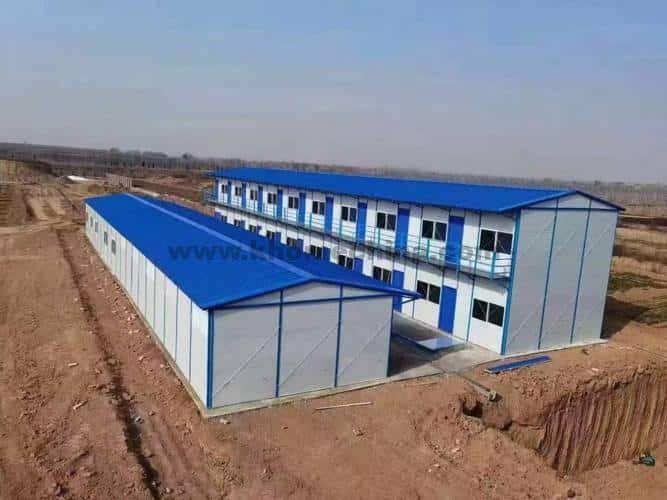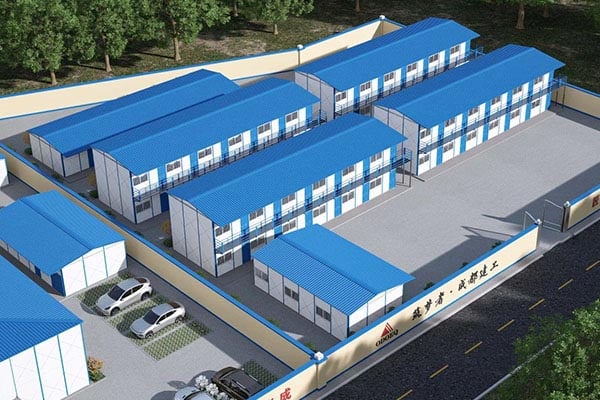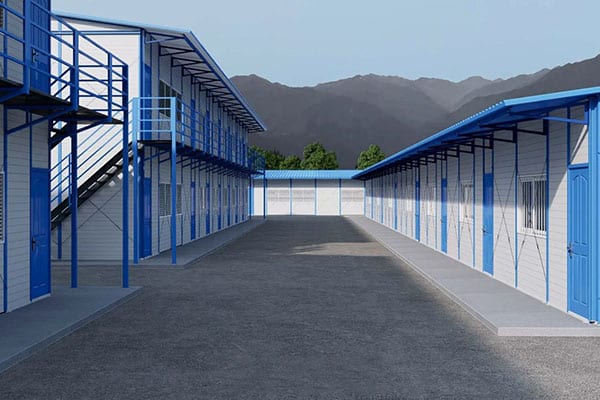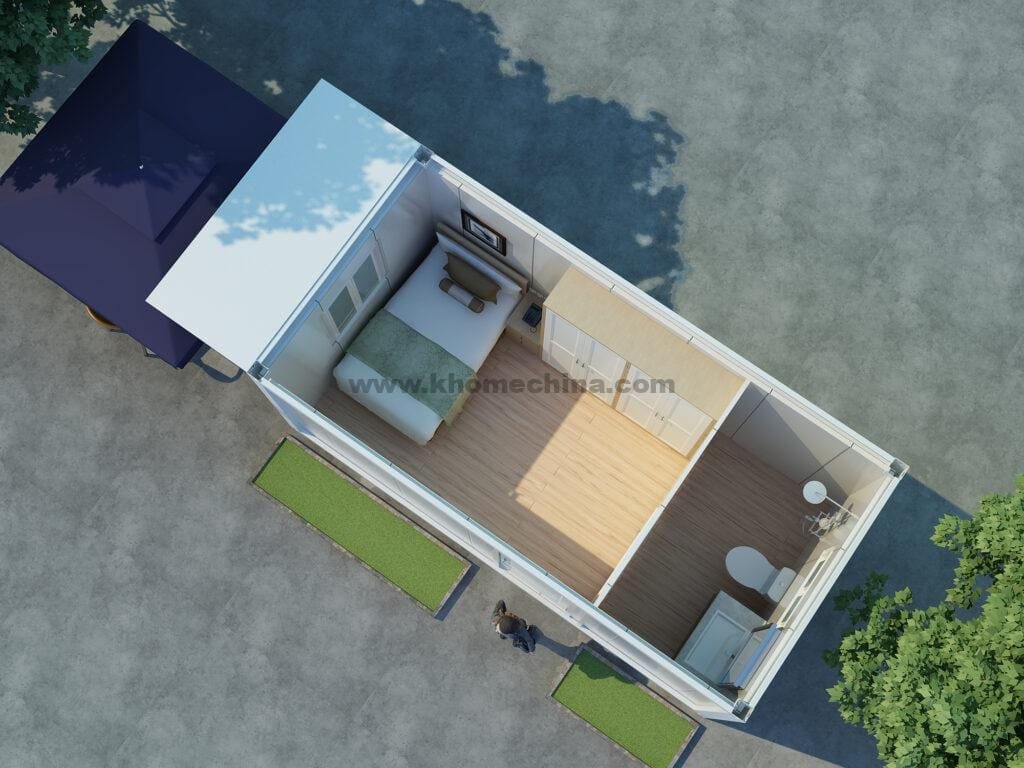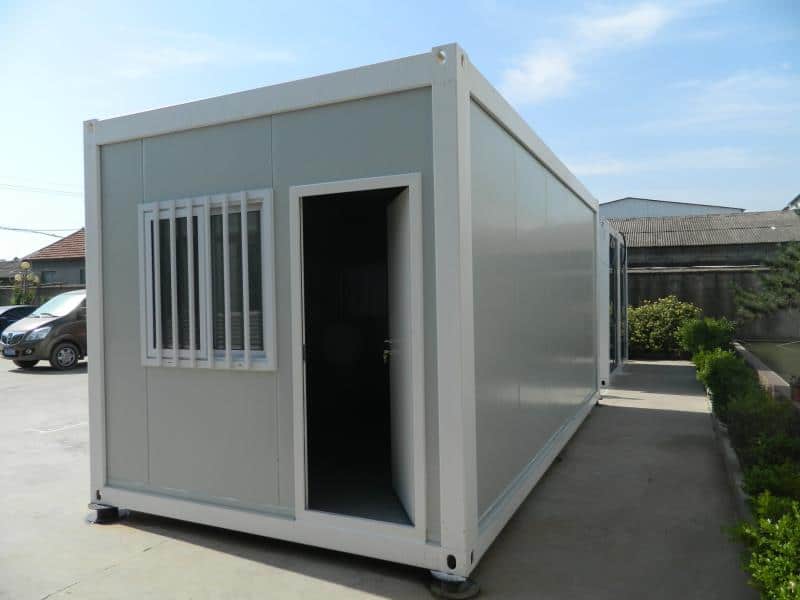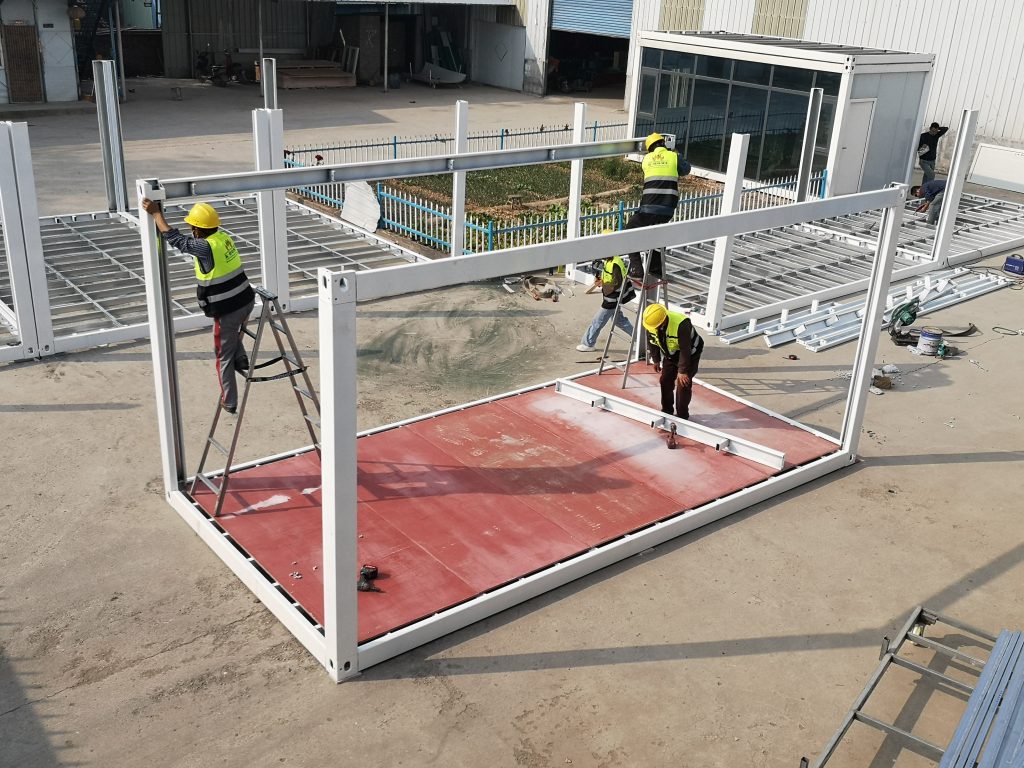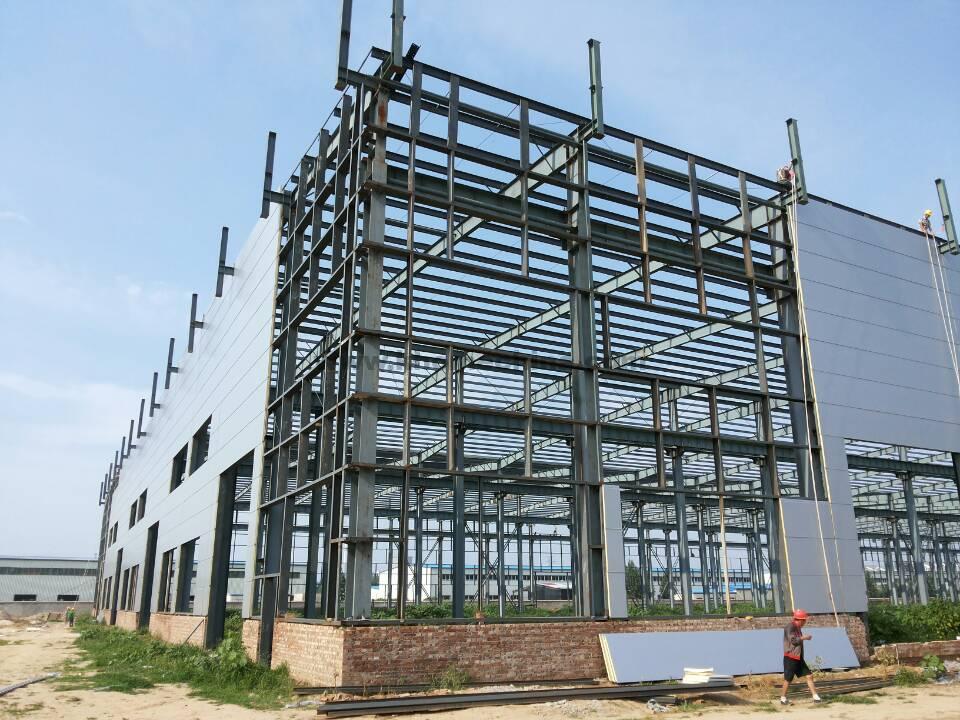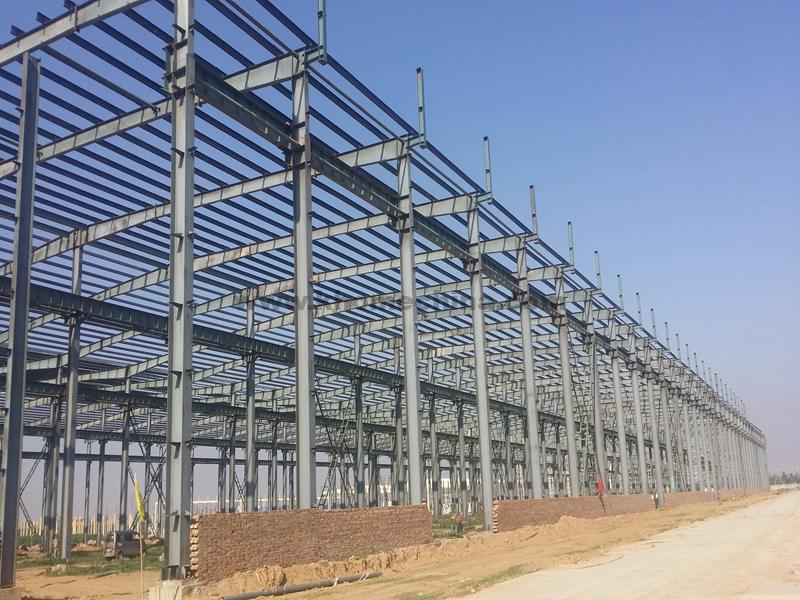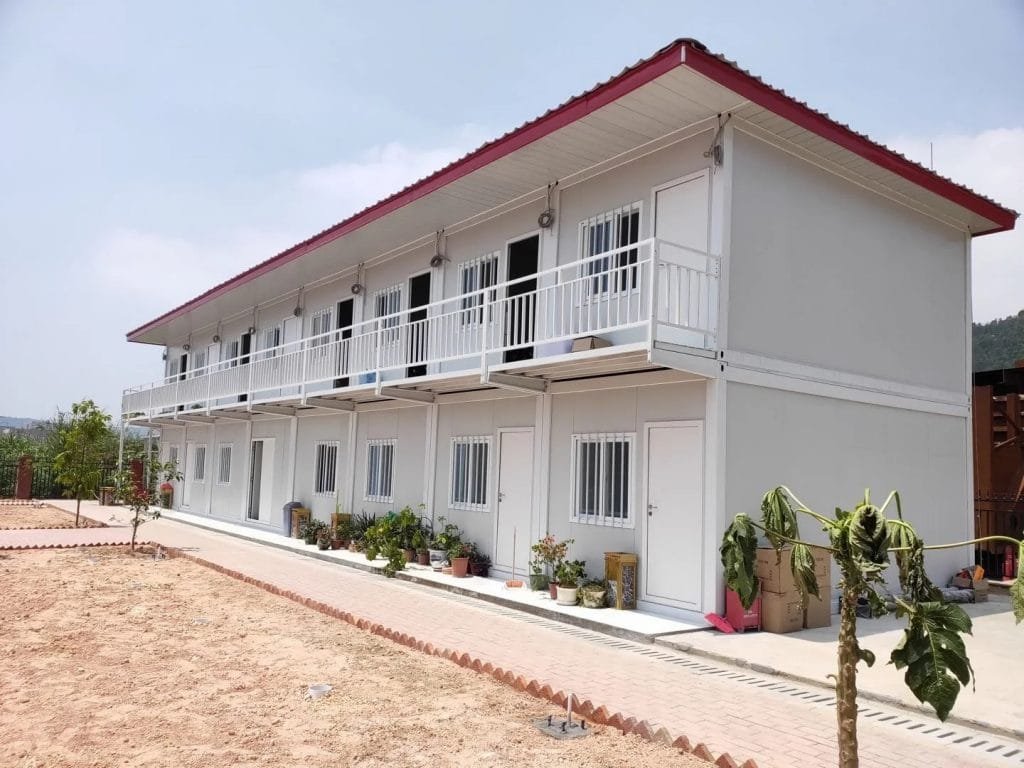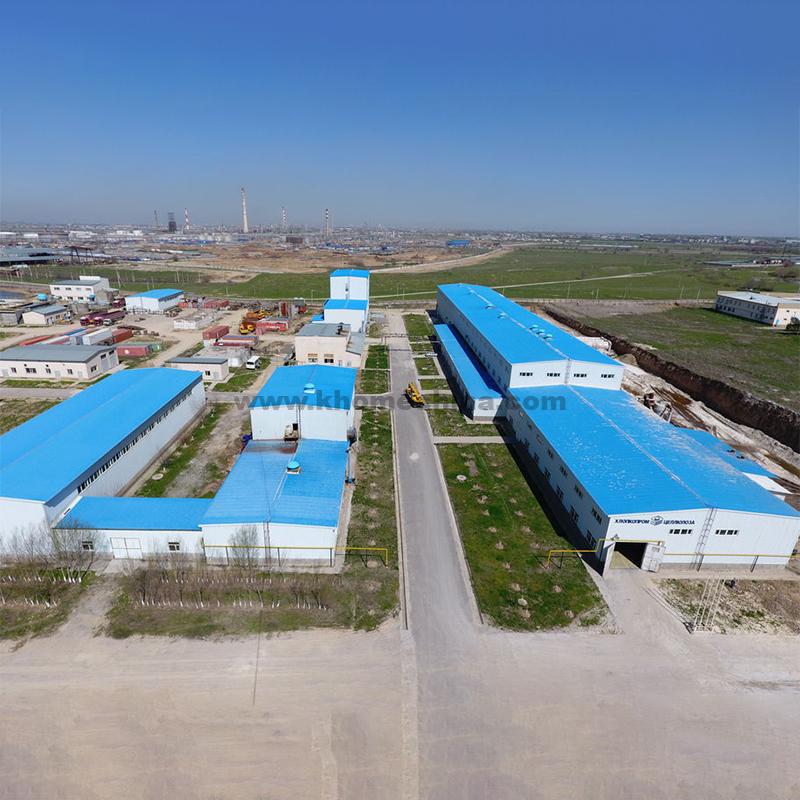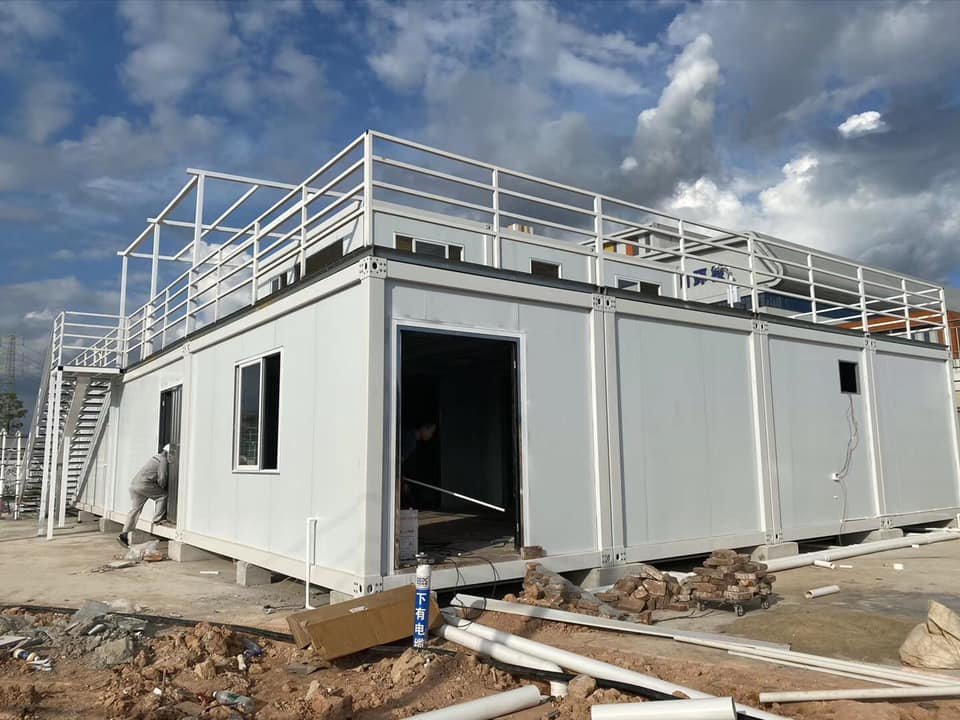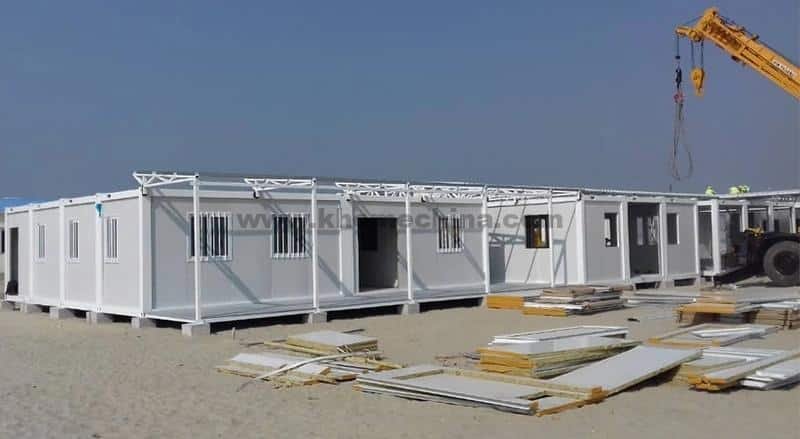Kenya Prefab House Demand Survey: Why is Prefab House in High Demand?
Kenya is experiencing economic growth, and its momentum is driving a surge in demand for fast, flexible construction solutions. This significant demand for prefab houses is not unfounded, but rather driven by the development of three key sectors:
- National Vision and Rapid Urbanization
The Kenyan government’s “Vision 2030” prioritizes energy, infrastructure, and construction as key development areas. On these large-scale project sites, temporary structures (including site offices, worker dormitories, storage facilities, and on-site command centers) are essential to ensure the smooth progress of construction.
- A thriving events and exhibition industry: As a regional gateway, Kenya hosts numerous international conferences and industry exhibitions annually. These events require the rapid construction of exhibition halls, reception areas, media centers, and restroom facilities.
- Humanitarian and Emergency Response: Parts of Kenya are frequently affected by climate-related disasters, and it is also a significant host country for refugees from neighboring countries. UN agencies and non-governmental organizations require the rapid deployment of large numbers of temporary shelters, emergency medical clinics, and storage and distribution centers.
Based on these factors, Kenya’s demand for temporary structures is diverse and ongoing. Prefabricated houses, as an efficient and economically feasible ultimate solution, solve the core pain points of the local market.
Deeply cultivating the Kenya market: Why KHOME is your best partner?
In Kenya, the demand for temporary buildings is widespread, but excellent solutions must go beyond the word “temporary.” As a professional prefabricated house manufacturer in Kenya, K-HOME is committed to providing sturdy, reliable, comfortable, and durable building solutions for a variety of applications. Even away from home, people can enjoy a safe and comfortable living and working space.
Creating products that truly meet local needs requires in-depth local insights. We travel across Africa annually to conduct on-site research on the usage environments and user habits in different regions. Through extensive visits and considering Kenya’s climate characteristics, we have a deep understanding of the core requirements of Kenyan users for prefabricated house:
- Prefab house in kenya require a stable structure that can withstand the effects of inclement weather. For example, strong winds and even cyclones are not uncommon in certain regions and seasons. Structural safety is paramount.
- Prefab house in kenya must be rust- and corrosion-resistant. Kenya’s rainy season (typically from March to May and from October to November) is often accompanied by short bursts of heavy rainfall. This requires prefabricated houses to be waterproof, rust-proof, and moisture-proof.
- Prefab house in kenya must be insulated and ventilated. Kenya is located on the equator, with consistently high temperatures year-round. Good insulation and ventilation are key to ensuring indoor comfort.
- Prefab house in kenya are economically viable. For projects with limited budgets, combining cost-effectiveness with durability is particularly important.
Based on these insights, we established a clear product development philosophy.
K-HOME specializes in providing affordable prefabricated building solutions. These solutions are suitable for site offices, staff dormitories, family rooms, and integrated camps. We optimize design and production processes to control costs while ensuring quality. We specifically enhance the product’s protective properties, ensuring excellent waterproofing, rustproofing, and corrosion resistance to withstand the challenges of the local climate.
K-HOME’s unique advantage stems from our extensive international experience. We draw on proven success stories from international projects, optimize them for local needs, and incorporate them into every process, from design to after-sales service, to ensure you provide proven solutions that have been proven in the international market.
Comprehensive Certifications:
We uphold the highest standards. Behind every building is a rigorous commitment to safety, quality, and sustainability, backed by dozens of internationally recognized certifications.
What is a Prefab House Construction?
“Prefabricated houses” are a type of modern modular construction. They are popular in Kenya for their affordability, sustainability and rapid construction. These prefab houses are built off-site in modules or sections and then transported to a designated site for assembly. Compared with the traditional “brick-by-brick” construction method, prefab houses in Kenya focus more on precise engineering design, standardized processes, and rapid deployment.
Precast Solutions in kenya | A full range of products to suit diverse budgets and needs
K-HOME understands that a successful building solution must be able to adapt to unique local environmental factors and budgetary requirements. At K-HOME, we offer a variety of prefabricated house types. You can choose the optimal solution based on your project’s needs and budget. Of course, you can also request a customized prefab house in kenya solution from our sales representatives.
Modular container houses & container building
To meet the diverse needs of various scenarios, K-HOME’s modular container houses blend the efficiency of standardization with the flexibility of customization.
We provide standard container units. The standardized structure supports mass production. Especially suitable for bulk orders, with the ability to respond quickly and deliver steadily.
we also support deep customization. Customers can make personalized adjustments to size, materials, internal layout, and external design according to their actual needs. Ensure that each unit is highly compatible with the usage scenario.
Whether it’s the on-site office at the construction site, employee dormitories for project personnel, or a comprehensive campsite that integrates office, living, and warehousing. This modular structure can be quickly assembled on site through modular combination, just like building blocks, greatly shortening the construction period and improving the overall efficiency of the project.
- standard 20ft container house
- 20ft container house
- Customized kitchen containers
- porta cabin container
- prefab container office
- Cabin Site Office
- labor accommodation camp
- construction site office cabin
- container schools
- three storey container building
- workforce housing
- construction camp container
- remote construction camp
- site office containers
Panelized Houses
Panelized houses belong to light steel prefabricated houses, which are designed and constructed using fixed modules. This type of prefab houses are also known as prefabricated T-house .
Prefabricated T houses adopt light steel structure as the skeleton, and prefabricated wall panels as the enclosure system. All components are produced in the factory and can be quickly assembled upon transportation to the site. During construction, the steel structure frame is first built, and then the wall panels are precisely fixed. This type of house has the most similar appearance to traditional residences. In addition, we offer a variety of design options ranging from standardization to deep customization.
Low-cost prefab building
This low-cost prefabricated building is also known as prefabricated K-house. This type of affordable prefabricated house is tailor-made for projects that pursue practicality and cost-effectiveness. It achieves the best balance between addressing local climate and controlling overall investment, providing customers with a reliable and cost-effective option.
Its core application scenario is to meet temporary and urgent needs, especially suitable for construction sites and other occasions. This type of temporary building can quickly build temporary office and accommodation spaces with basic functions. For project camps with limited budgets and short construction periods, this is undoubtedly an efficient and practical optimal solution.
Where Can Prefab Houses Be Used in Kenya?
Prefab house is no longer just a makeshift shed; it’s now a highly efficient and cost-effective prefabricated construction solution. The versatility and adaptability of modern prefabricated housing make it a perfect fit for Kenya’s rapidly developing economy. These prefab buildings provide immediate, durable, and cost-effective solutions for a wide range of industries.
Construction Site Camps and Offices
Infrastructure construction in Kenya requires durable temporary facilities on project sites. Prefab house in Kenya is an ideal choice for site offices, worker dormitories, on-site canteens, and sanitary facilities. They can be deployed quickly, enabling projects to commence sooner. Their durability also protects valuable assets from theft and inclement weather. After project completion, these buildings can be relocated to the next construction site, maximizing return on investment.
Emergency Shelters and Health Clinics
Prefabricated house plays a critical role in disaster response. They provide rapidly deployable emergency shelters, health clinics, and health facilities. They can be constructed in remote and challenging environments, saving valuable time and resources and helping to deliver aid with dignity and efficiency.
temporary student housing
Prefabricated buildings offer a quick solution for adding classrooms and school administration buildings. They can serve as permanent or semi-permanent facilities, or as temporary replacements during renovations of existing buildings, ensuring uninterrupted educational services.
What is the Situation of Prefab Houses in Kenya?
Due to the time, money, and manpower spent on permanent construction, many people cannot afford a comfortable house.
With the emergence of light steel prefabricated houses, it can largely meet the needs of a considerable number of people for houses, which also makes our products more and more popular in Kenyan fashion.
We went deep into the African market to understand the living habits and characteristics of the locals. In the design of the Prefab Houses in Kenya, we not only pursued beauty and fashion but also integrated practicality into the house design. It can make people live in comfortable, cheap, and beautiful Manufactured Homes.
Thanks to our R&D team for putting a lot of energy into the design, so now all parts of the Mobile Homes are connected by bolts, and there is no need to use electric welding and other installation methods that require special skills. This makes it easy for every ordinary person to build their own house, and not only can it be built, but it can also be built very quickly.
For Prefab Houses in Kenya, wind and rain protection is the most important and basic requirement, especially in Kenya, where rain is more frequent. The rainproof treatment of the roof is very important. We use various folding parts such as outside big corner bending parts and inner corner bending parts, which could do a good performance in the details, make the house could reach a perfect situation. Currently, the houses we have built-in Africa countries have received very good feedback, and there has been no problem of rain leakage.
Only when customers see our real case, will they know more clearly what they are buying in the future, and they will compare what they should pay attention to when buying a house and how to choose. Because of our successful cases, more and more people choose from K-Home.
Why Prefab Houses Suit Kenya’s Needs?
Rapid Urbanization
Quick deployment of KHOME prefabricated houses addresses housing shortages in cities like Mombasa and Kisumu.
Climate Resilience
KHOME prefab building materials such as galvanized steel can withstand heavy rains and high temperatures.
Cost Control
Predictable pricing minimizes budget overruns common in traditional builds.
How Much Does a Prefab House In Kenya Cost?
K-HOME offers affordable prefabricated houses in Kenya designed to meet the needs of diverse clients. Our prefabricated houses are constructed with high-quality materials and are durable.
The cost of prefabricated houses in Kenya varies depending on the structure, size, material and design of the house. The average price of a prefabricated house is around $40-$60 USD per square meter, excluding freight, furniture and bathrooms. If there are special requirements for design and materials, such as adding partitions or replacing glass walls, the price will vary accordingly.
Our prefabricated houses offer a variety of solutions and customization options. We can provide complimentary design services tailored to your exact needs. At KHOME, we pride ourselves on offering affordable prices and superior quality.
We emphasize working closely with our clients to design prefabricated building projects that meet their specific needs and preferences. Our team of experts has extensive experience in prefabricated houses and is committed to providing high-quality solutions that meet our clients’ needs.
Clients Feedback
As the feedback from clients, the features of our prefab house are:
About Price:
1. Prefabricated House Price is about 70% less than permanent building.
About Installation Period:
1. The installation period is quite short: Prefabricated houses shorten time by bypassing weather delays and labor shortages. Although the foundation is prepared on-site, the house materials are produced and built in the factory, shortening the overall project time by 40-60%. For example, a 3-bedroom prefabricated house in Kenya can be assembled in 7-14 days, while traditional buildings take 6-12 months.
2. Immediately move in, after completed installation, it already with window, doors, etc, no need too much decoration, they can move the belonging in immediately, no need wait.
3. Recycle to use as Eco Homes, a client they want to move to other places, this house he can resell it as second hand or disassemble it and take all the items with him to the new place.
about design:
Prefabricated houses are not ‘one size fits all’. Advanced CAD software allows buyers to customize:
1. Material Selection: K-HOME prefabricated homes are available in a variety of materials to meet the needs of different budgets. The price and expected lifespan of the home will also vary depending on the quality of the material.
2. Flexible design: The low cost of prefabricated houses allows them to be used as construction barracks, providing dormitories and office space for workers. K-HOME’s prefabricated houses can be designed according to your needs. Our professional designers will provide different customized plans until you are satisfied.
From Customer to Agent
Now we are developing cooperation partners all over the world. And it would be our honor if we can work with a professional and experienced company in your country.
We K-home have been in the Prefab Houses in Kenya industry for about 20 years. And we are committed to using technological innovation to promote building construction. Our mission is also to use our prefab house to help low-income people live happily.
Many of our agents are start as customers to work with us, and after using our products themselves, they offered to become our company’s agents in their countries. This process includes a lot: Our high cost-effective products, our best service, trust in our company, and good future prospects of the product.
Best Prefab Houses Manufacturer for Kenya: K-HOME
With Kenya’s rapid urbanization and surging housing demand, how to efficiently and sustainably meet diverse housing needs has become a key challenge. As an innovator in the field of prefabricated buildings – Chinese manufacturer K-HOME, with its core concepts of durability, affordability, customizability, and green environmental protection, is becoming an ideal partner for the Kenyan market, providing leading solutions for local housing and infrastructure development.
The Kenyan market requires flexible building solutions. K-HOME offers modular combination designs that support customers to customize the type and appearance of houses according to the land area and functional requirements. The most important thing is that these prefabricated houses are cost-effective.
KHOME’s prefabricated houses in Kenya provide one-stop services from design, and transportation to installation. At the same time, K-HOME prefabricated houses have passed ISO 9001, CE, SGS, and other certifications, and their quality has been verified in projects in many African countries (such as Ethiopian container hotels, Mali military camps, etc.).
K-HOME redefines the future of the Kenyan construction industry with technological innovation and user-first philosophy. Whether it is to solve housing needs or support business development, K-HOME’s prefabricated house solutions can create long-term value for customers. Contact the K-HOME team now to get customized solutions and enjoy limited-time offers!
Frequently asked questions
Related blogs
SEND A MESSAGE
